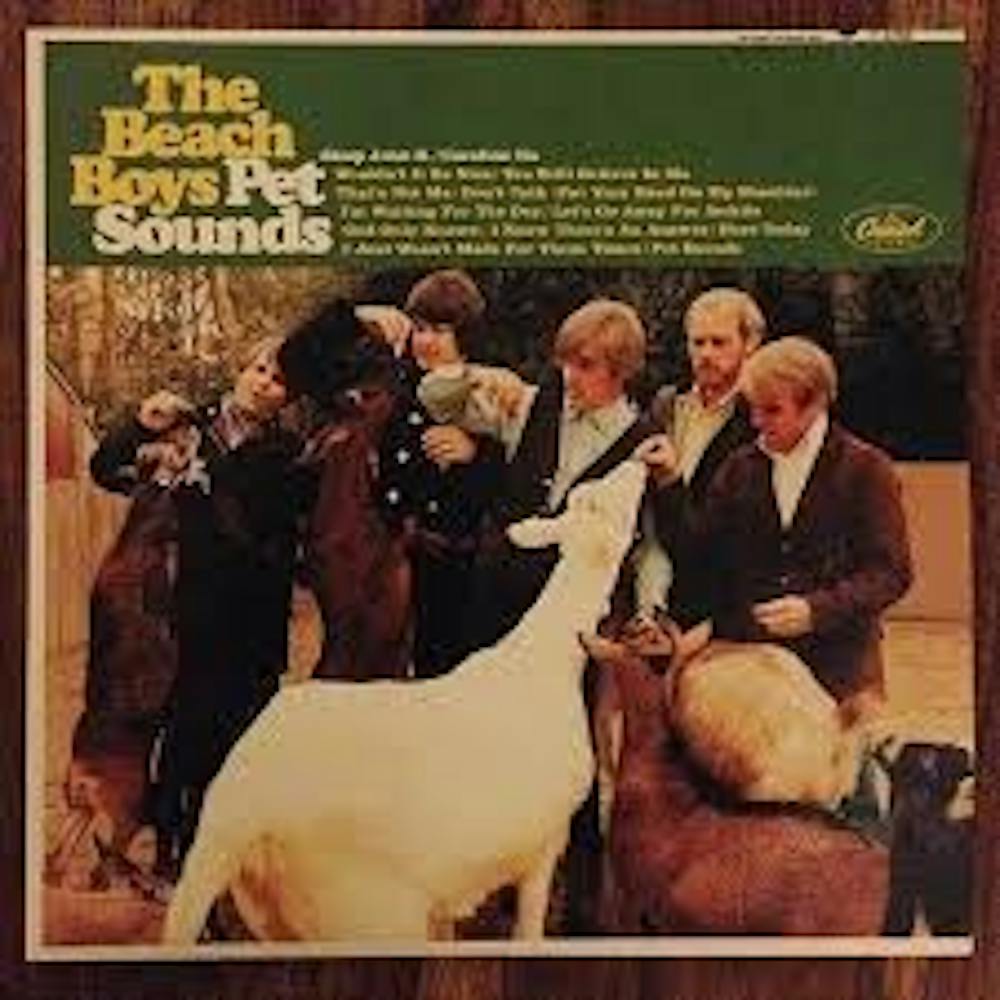This past May, “Pet Sounds” passed the 50-year mark since its release in 1966, and with the passing of this milestone, the concept of critical artistic value in popular music turned 50 as well. The Beach Boys’ opus, “Pet Sounds” set the standard for mainstream music for its era and helped define the psychedelic pop sound that would flourish and percolate through all other genres of music.
Borne out of Brian Wilson’s inability to tour with the rest of the band, “Pet Sounds” was meticulously arranged by Wilson in an attempt to craft an artistic response to the Beatles’ psychedelic classic, “Rubber Soul.” Featuring Phil Spector’s session orchestra and a wide range of other equipment and effects, Wilson’s instrumentation was crafted over the course of over ten grueling months. The obsessive bandleader recorded and re-recording parts over and again until he achieved the sound he wanted—an ingenious, sublimely trippy blend unprecedented in the popular canon. Wilson’s unique sound was no coincidence: many of the instruments he used, including the theremin, accordion and harpsichord, were brand new to pop music.
The remaining Beach Boys returned from tour to find vocal parts awaiting them that were far different from the straightforward, danceable harmonies they had performed on their early tracks. Wilson’s high standards and the psychedelic influence found in the music (the “uptight” folks in “I Know There’s an Answer”; also see “Sloop John B”: “This is the worst trip I’ve ever been on”) did not sit well with the other members of the band, who brought their own lyrics to the table as well. Despite some conflict, the band slaved in the studio under Wilson’s guidance, and the album was released May 16, 1966.
Critics did not immediately greet the album with the same praise they lavished on “Rubber Soul,” justifying many of the band members’ Wilson-contradicting opinions. Overshadowed by the Beatles’ next album “Revolver,” “Pet Sounds”’ mainstream reception remained lukewarm, though other musicians received it well. Eric Clapton has since praised the record and Paul McCartney even claimed that the album inspired “Sgt. Pepper’s Lonely Hearts Club Band.”
Conceived by Wilson as an attempt to create a cohesive work of art, “Pet Sounds” is an early concept album. The themes of love, both lost and found, and struggling to relate to the world are found consistently throughout the record. And the songs have thematic similarities, despite the disparity in musical tones. “Pet Sounds” helped change the very face of pop music: The concept album played a key role in the shift away from single-oriented pop that dominated the marketplace in the 1960s, and it helped birth album rock.
The record, with its reliance on orchestration and recording techniques, its unusual keys and its atypical song structures, also helped created progressive rock. Wilson experimented with bizarre instrumentation, using an eclectic mix of percussion instruments and used recordings of normal objects, including a train and a dog barking on “Caroline, No.” These influences carried over into the progressive rock that would dominate pop music in the 1970s and 1980s.
Despite its far-reaching influence, however, “Pet Sounds” stands alone. From the indelible arpeggios interrupted by the crashing snare of the opener “Wouldn’t It Be Nice,” it does a masterful job of connecting the saddest of human emotions—heartbreak, distance from society—to incredibly complex, yet upbeat instrumentation in tiny pop song chunks. No song is longer than three minutes and twenty seconds.
Take “I’m Waiting for the Day,” the fifth song on the album. Crashing tympani open the song, only to give way to a sweeping symphony of flute, keyboards and strings backed by the signature doos and dahs of the Beach Boys. Brian Wilson’s lead vocals bemoan a woman who can’t love after another lover broke her heart. His deliciously upbeat arrangement belies the bittersweet sadness of the song. Wilson’s lyrics reach for something completely accessible, yet still distant: “He hurt you then, but that’s all gone / I guess I’m saying you’re the only one / I’m waiting for the day when you can love again.”
From “Wouldn’t It Be Nice” to the Bahamian folk cover “Sloop John B” to “Caroline, No,” “Pet Sounds” dominates all emotions and demonstrates the magic of Brian Wilson’s pop engineering. The album closes with the wistful anthem “Caroline, No,” which concludes with a dog barking over the sound of a train rushing to some unknown destination. Just like that train, music hurtled headlong into the unknown in the fifty years since “Pet Sounds.” And just like that train, our top 40 hits could never have existed without the Beach Boys. “Pet Sounds” was composed by Wilson as a great pop album, but its influence will loom as long as pop music continues to be made.
Get The Chronicle straight to your inbox
Signup for our weekly newsletter. Cancel at any time.

